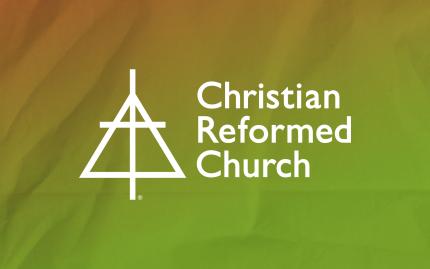Structure and Leadership FAQs

What changes are being proposed to the CRCNA’s structure and leadership?
The Council of Delegates (COD) adopted several recommendations related to the CRCNA’s organizational structure and senior leadership positions. They fall under the broad categories of culture, leadership, governance, joint ministry agreements, and a Canadian office. These recommendations will now go to Synod 2022 for final approval. Read a summary of these recommendations.
Why are changes necessary?
The recommendations came about after more than a year of wrestling with how best to structure the CRCNA organization in a way that fosters continued unity across our 1,000+ congregations while meeting legal requirements for charities in both the United States and Canada. This process began when the Canadian board of the CRCNA determined that it was likely in breach of Canadian charitable law and needed to take steps to allow for more direction and control of ministry by Canadians. It was further shaped by a growing recognition that recommendations approved by Synod 2000 in a “Governance Proposal” (see Acts of Synod 2000, p. 623) had never adequately been implemented.
What would be the role of the new general secretary, and how would it compare to the current position of executive director?
The committee tasked with developing recommendations for the CRCNA’s leadership and structure was asked to propose a new leadership model rather than simply revise the executive director position. As such, they started with a blank slate and developed a position description and structure based on the needs of the CRCNA organization. Similar to the current executive director position, the general secretary’s responsibility, as they propose it, would be to nurture the shared mission of the CRCNA and to ensure the effective implementation of this mission through the CRCNA ministry plan in Canada and in the United States. Also in similarity with the current position, the general secretary would be tasked with keeping the CRCNA attentive to synod’s long-term vision for its mission in the world, both locally and globally, and in nurturing strong ecumenical relationships. However, the general secretary role would place greater emphasis on shaping and embracing an organizational culture that supports effective partnership and collaboration between the ministry boards, agencies, partners, and staff that serve the CRCNA.
What would be the role of the new chief administrative officer, and how would it compare to the current position of director of ministries and administration?
In parallel to the response to question 3, the committee started with a blank slate to develop a leadership model that it felt would best meet the administrative needs of the CRCNA organization. In this model, the chief administrative officer (CAO) would report to the general secretary and, together with the general secretary, would communicate a clear and compelling vision to inspire administrative and ministry leaders and ministry partners to advance the binational mission of the CRCNA. Specifically, the CAO would have the administrative authority and accountability to guide and oversee administrative and support services needed to advance the ministry plan in such areas as governance and compliance, joint ministry plans, finance and budgets, human resources, and facilities. While this role would be similar to that of the current director of ministries and administration, there would be some changes. The CAO would oversee and support the Ministries Leadership Council. There would be greater emphasis on improving governance of the many CRCNA boards and committees and on the expanded use of joint ministry agreements to build cooperation, collaboration, and partnership. There is an increased focus on ensuring that the CRCNA ministry institutions, agencies, and partners work together to support and advance the CRCNA ministry plan.
What is meant by the term the “office of general secretary’?
The Office of General Secretary refers to the general secretary and the CAO positions. Together, these positions would jointly share responsibility and accountability to the Council of Delegates to guide and direct the entire CRCNA organization. While each position has distinct roles and responsibilities as described in their position descriptions, the general secretary and CAO would work together as partners and have shared leadership responsibilities and accountabilities based on abilities and gifts as well as organizational changes and needs. This shared office would ensure ecclesiastical and administrative integration, and the two positions would serve together to facilitate the shared governance partnerships and relationships that characterize the life, ministry, and mission of a denomination that exists in two countries.
What is the “Ministries Leadership Council”?
The Ministries Leadership Council (MLC) is a binational gathering of ministry leaders of the CRCNA organization and is convened by the Office of General Secretary to advance the vision, mission, values, and ministry plan of the Christian Reformed Church in Canada and the United States. This group establishes and maintains standards and strategies in the context of COD policies. It also facilitates advancement, integration, and collaboration across ministry organization, programs and partners. The key responsibilities of the MLC are to oversee the implementation of the CRCNA ministry plan and the expanded use of joint ministry agreements; clarify roles and responsibilities; address issues of mutuality, reciprocity, and collaboration; develop effective patterns of communication; and build organizational trust.
Could the positions of general secretary and chief administrative officer be housed in either country?
Yes, both positions that would make up the Office of General Secretary are considered ecclesiastical in nature. In that way, they serve the whole breadth of the denomination and are not limited to one specific country. As a result, the search team tasked with finding candidates for these positions will not be limited to finding people only in the United States or only in Canada.
What is meant by the establishment of a Canadian office? Why is this necessary?
While there already is a physical office building for the CRCNA in Canada (in Burlington, Ont.), the recommendation to establish a Canadian office acknowledges the need for official recognition of the Canadian arm of the CRCNA. The Canadian office would be governed and overseen by the Canadian board of the CRCNA, and directed by the newly established position of executive director. The Canadian executive director position would be directly accountable directly to the CRCNA-Canada board of directors. This would allow for clear direction and control of all Canadian ministry activities, which is necessary for regulatory requirements. At the same time, the Canadian executive director would work in close partnership with the Office of General Secretary to ensure coordination, information sharing, and joint problem solving as it relates to the CRCNA ministry plan and other shared denominational ministry goals.
Why isn’t there a recommendation for a U.S. office of the CRCNA or a U.S. executive director?
The COD recommendations do not specifically ask for the establishment of a U.S. office of the CRCNA in parallel to the Canadian office, or a U.S. executive director in parallel to the Canadian one. This is because U.S. charitable law does not have the same regulatory requirements for direction and control as Canada has. As such, this matter was outside of the specific mandate that the COD was dealing with at this time. However, this does not preclude the U.S. corporation of the CRCNA from pursuing such an office or position in the future if it becomes necessary.
What is meant by an office on governance? Why is this important?
An office on governance would ensure compliance with regulatory issues, provide training and education of board members, and provide oversight of and expanded use of joint ministry agreements. While the exact construct of such an office needs to be determined, the task force indicated that they hoped it could be done without increased cost. This type of office is necessary because of the complexity of being a denomination within two countries and having a structure that includes multiple boards.
What are joint ministry agreements? Why do they matter?
Joint ministry agreements are legal documents that outline expectations and responsibilities for multiple parties when they share ministry. The taskforce recommended that the CRCNA place increased emphasis on joint ministry agreements to guide ecumenical affairs, governance, administration, and ministry in the United States and Canada. While joint ministry agreements are developed by ministry leaders, they would be approved by the relevant ministry boards in Canada and the United States before becoming effective. The taskforce also recommended that joint ministry agreements be used to guide the many existing and future ministry partnerships between institutions, agencies, programs, and partners.
Would all of this result in less cooperation between the United States and Canada?
No, the intent of these recommendations is to foster a culture that is characterized by cooperation, collaboration, and partnership. While they would allow for more country-specific direction and control, the emphasis would be on doing so within a shared, ecclesiastical vision and ministry plan. The expanded use of joint ministry agreements would create role clarity, identify opportunities for mutuality and reciprocity, promote healthy patterns of communication and build organizational trust. All of this would give shape to a positive and healthy culture that is aligned with the values of the CRCNA organization.
Would this new structure solve the compliance issue with Canada Revenue Agency requirements?
The COD thinks that this proposal would meet the regulatory requirements of Canadian charitable law. It would strengthen the CRCNA board in Canada to demonstrate that it is providing control and direction to ministry programs and partners in Canada. The proposed structure will need to be reviewed by legal counsel to ensure that these expectations are true. If the reviews suggest that additional changes are needed, those will be addressed.
Why will a search process begin before Synod 2022 takes action on the plan?
The senior levels of CRCNA leadership have been filled in an interim way since February 2020. While the interim leaders have agreed to delay their retirements and extend their service until Synod 2022, we do not want to prolong this situation any longer than necessary. We also recognize that these new roles would be key positions that would require a robust and Spirit-filled recruitment and discernment process, and that the nominees would ultimately need to be approved by synod. By starting the search process now, we hope to be able to recommend candidates to Synod 2022 as soon as they have processed the organizational and structural recommendations. If synod does not adopt the recommendations or wants changes to the roles and responsibilities, those matters would be addressed before making any offer of employment.


